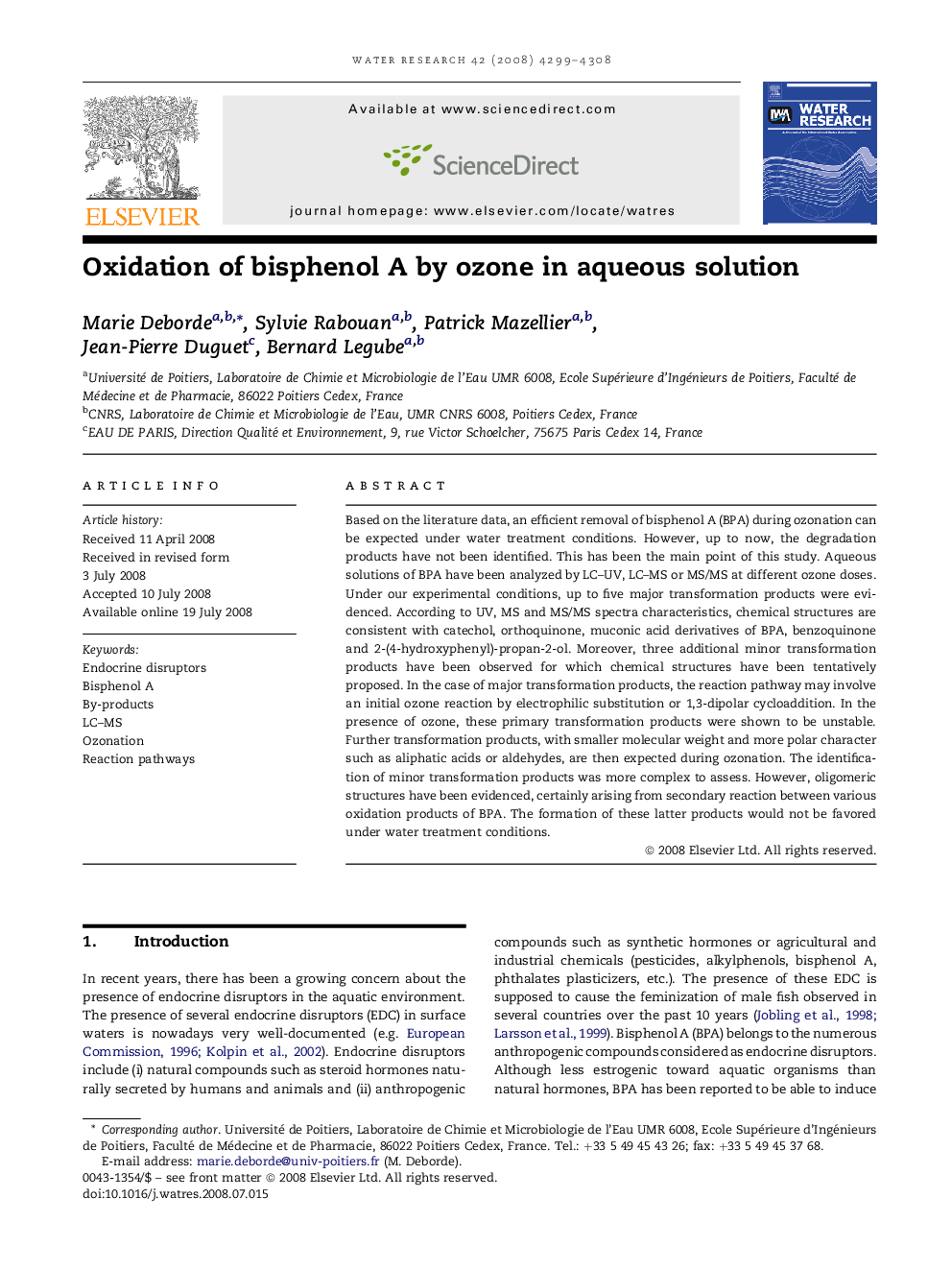| Article ID | Journal | Published Year | Pages | File Type |
|---|---|---|---|---|
| 4485798 | Water Research | 2008 | 10 Pages |
Based on the literature data, an efficient removal of bisphenol A (BPA) during ozonation can be expected under water treatment conditions. However, up to now, the degradation products have not been identified. This has been the main point of this study. Aqueous solutions of BPA have been analyzed by LC–UV, LC–MS or MS/MS at different ozone doses. Under our experimental conditions, up to five major transformation products were evidenced. According to UV, MS and MS/MS spectra characteristics, chemical structures are consistent with catechol, orthoquinone, muconic acid derivatives of BPA, benzoquinone and 2-(4-hydroxyphenyl)-propan-2-ol. Moreover, three additional minor transformation products have been observed for which chemical structures have been tentatively proposed. In the case of major transformation products, the reaction pathway may involve an initial ozone reaction by electrophilic substitution or 1,3-dipolar cycloaddition. In the presence of ozone, these primary transformation products were shown to be unstable. Further transformation products, with smaller molecular weight and more polar character such as aliphatic acids or aldehydes, are then expected during ozonation. The identification of minor transformation products was more complex to assess. However, oligomeric structures have been evidenced, certainly arising from secondary reaction between various oxidation products of BPA. The formation of these latter products would not be favored under water treatment conditions.
